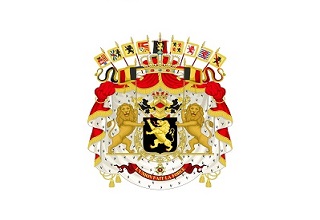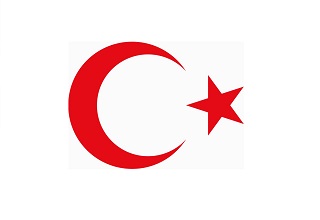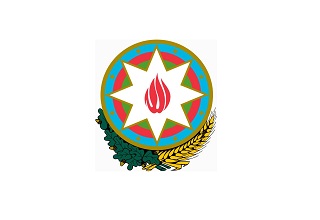Regarding the Inspection and Quarantine Requirements for Raw Wool from South Africa to China
I. Inspection and quarantine basis
(I) "Biosafety Law of the People's Republic of China";
(II) "Law of the People's Republic of China on Entry and Exit Animal and Plant Quarantine" and its implementing regulations;
(III) "Regulations on the Supervision and Administration of Entry and Exit Inspection and Quarantine of Non-food Animal Products";
(IV) "Protocol on Quarantine and Sanitation Requirements for the Export of Raw Wool from South Africa to China between the General Administration of Customs of the People's Republic of China and the Ministry of Agriculture of the Republic of South Africa".
II. Scope of imported products
The raw wool in this announcement refers to unprocessed greasy wool produced in South Africa, including raw wool and mohair.
III. Requirements for production enterprises
The production and processing enterprises and storage places of raw wool exported to China shall be approved and supervised by the South African Ministry of Agriculture on a daily basis, and registered with the Chinese Customs before they can export raw wool to China.
IV. Requirements for imported products
(I) Sanitary requirements of the origin of products.
1. According to the relevant regulations of the World Organization for Animal Health (WOAH), there is no rinderpest, peste des petits ruminants, sheep pox and goat pox in South Africa. If the above diseases occur in South Africa, the South African Department of Agriculture should immediately stop exporting raw wool to China.
2. Within 6 months before the animal is sheared, there is no anthrax and brucellosis in the source area of the exported raw wool (within a radius of at least 50 kilometers centered on the farm).
3. For foot-and-mouth disease:
The farm where the raw wool is sourced from has not had foot-and-mouth disease within 12 months before the animal is sheared; or, if the farm where the source animal is located is located in a foot-and-mouth disease epidemic area, the raw wool is processed in accordance with the following methods specified in Article 8.8.36 of the WOAH Terrestrial Animal Code to inactivate the foot-and-mouth disease virus:
(1) Store at 4°C for 4 months, or,
(2) Store at 18°C for 4 weeks, or,
(3) Store at 37°C for 8 days, and,
The above process should be carried out in a production and processing enterprise or storage site registered with the Chinese Customs and approved and supervised by the South African Department of Agriculture.
4. For PPR:
The province where the raw wool is sourced from has not had PPR within 12 months before the animal was sheared.
(II) Requirements for animal sources of the product.
1. Healthy animals raised in South Africa and under the supervision of the South African Department of Agriculture for animal diseases.
2. No diseases that can be transmitted through raw wool and endanger human health and animal health have occurred.
(III) Production and processing requirements.
The raw wool is sorted before packaging, and no animal tissue, blood, feces, soil and other debris, harmful weeds, and weed seeds are carried.
V. Packaging and labeling requirements
(I) The package is intact and the packaging materials are in good condition to prevent cross contamination.
(II) All packages are labeled in English, including the transport reference number and/or the shipping mark of the goods, as well as the manufacturer number, batch number, product name and country of origin.
VI. Storage and transportation requirements
(I) Raw wool containers shall be disinfected with effective disinfectants before use under the supervision of the South African Department of Agriculture, fumigated with insecticides after loading and before closing the seal, and sealed with anti-theft lead seals with unique digital codes.
(II) Necessary measures shall be taken to prevent contamination of raw wool during processing, storage and transportation.
(III) The time from storage in South Africa to export to China for each batch of raw wool shall not be less than 28 days.
VII. Pre-export inspection and certificate requirements
Raw wool shall be inspected and quarantined by the South African Department of Agriculture in accordance with South African laws, regulations and relevant protocols, and a health certificate shall be issued for qualified goods to prove that they meet the requirements of the relevant protocols.
VIII. Entry inspection and quarantine requirements
When raw wool arrives at the Chinese entry port, the Chinese Customs shall implement quarantine in accordance with the following requirements.
(I) Certificate verification.
1. Verify whether it comes from a registered enterprise.
2. Verify whether the health certificate is authentic and valid.
(II) Cargo inspection.
In accordance with relevant laws, administrative regulations, rules and regulations, and in combination with the requirements of this announcement, China Customs will conduct inspection and quarantine on raw wool imported from South Africa to China. If the inspection and quarantine are qualified, it will be allowed to enter the country.
(III) Handling of unqualified situations.
1. If there is no valid health certificate, it will be returned or destroyed.
2. Products from unregistered manufacturers will be returned or destroyed.
3. If soil, animal carcasses, animal excrement, quarantine pests or other prohibited items are found to be carried or contaminated, and effective quarantine cannot be carried out, they will be returned or destroyed.
4. If the label does not meet the requirements and cannot be corrected, it will be returned or destroyed.
5. If loose packages or broken containers are found, the owner or agent shall be responsible for sorting them out intact. If the packaging is damaged and there is a risk of spreading animal and plant diseases, the contaminated site, items and utensils shall be disinfected.
6. If major safety and health issues are found, China Customs will notify the South African Ministry of Agriculture and take measures such as strengthening inspection and quarantine and suspending the export of relevant registered manufacturers to China.
GACC
Sep. 20, 2024




